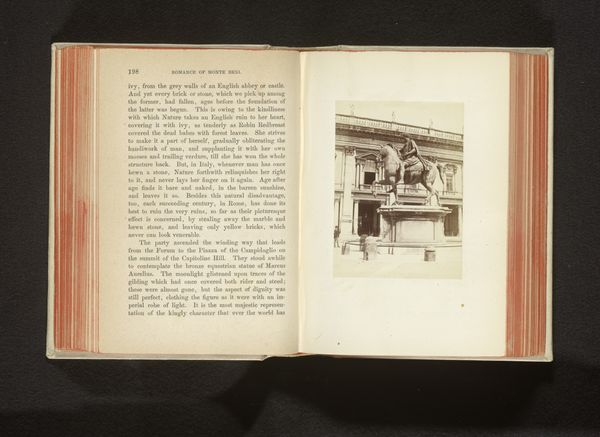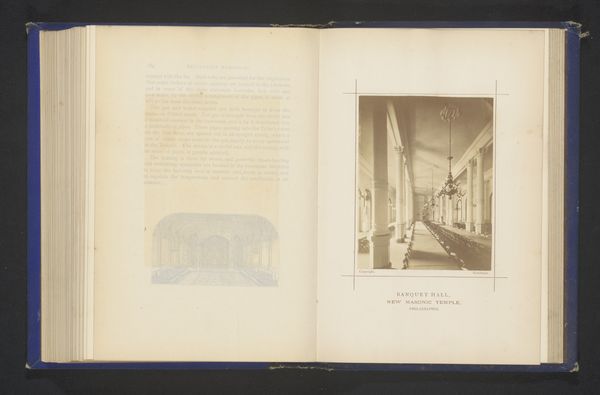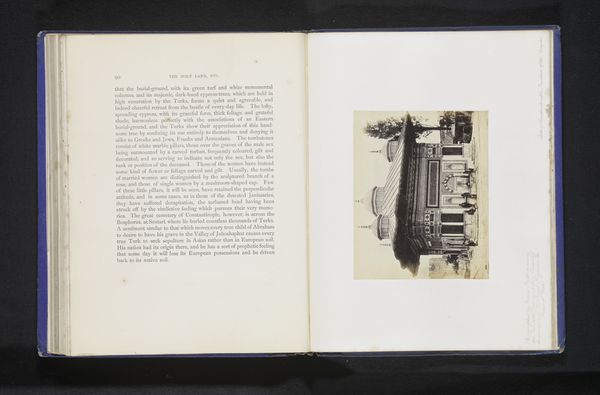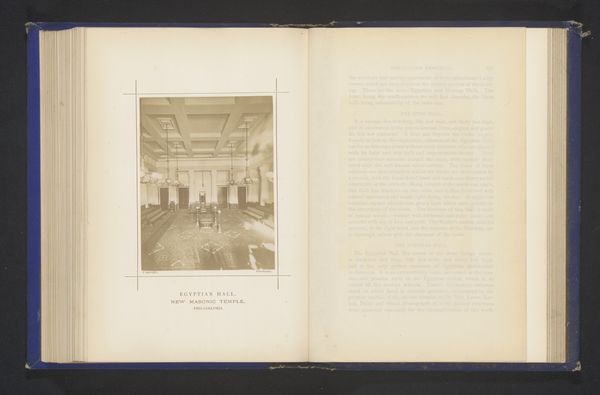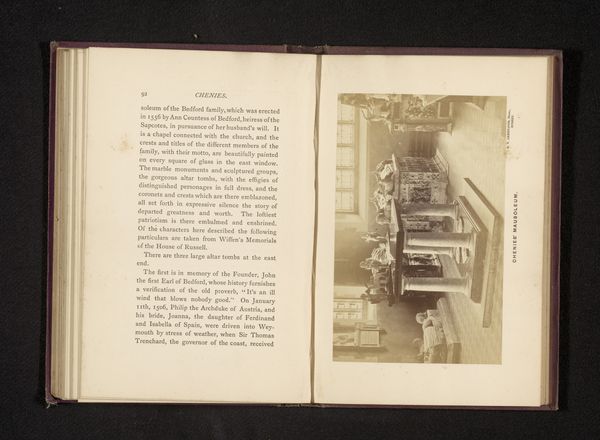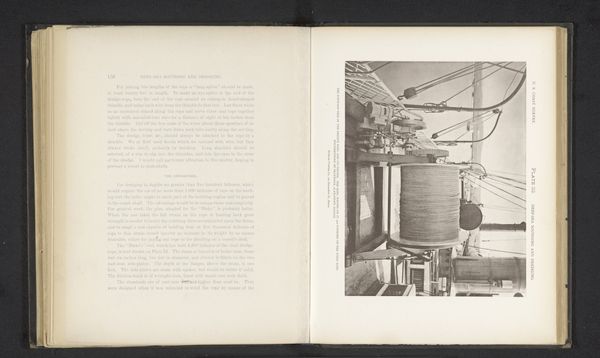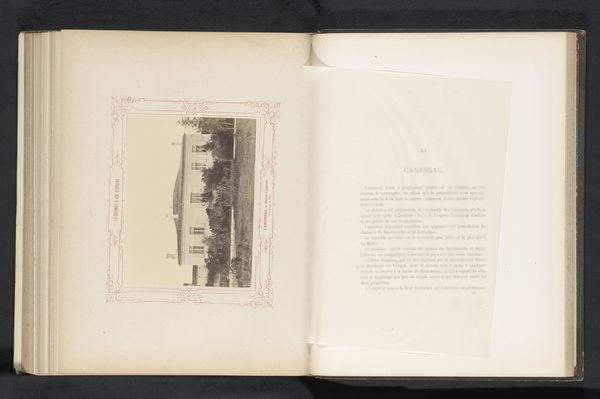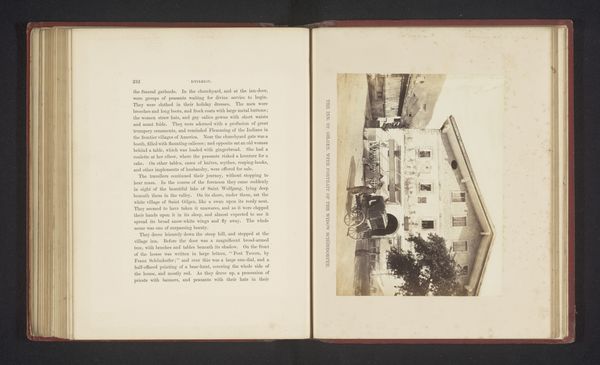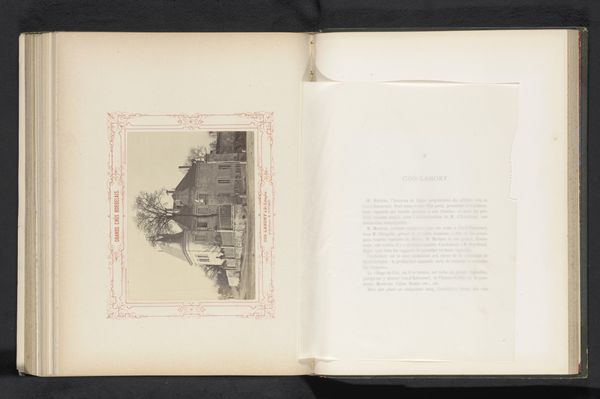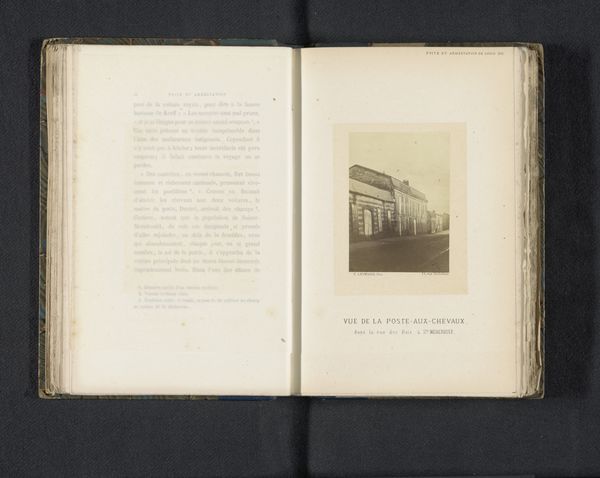
Interieur van de bibliotheek van de tempel van de vrijmetselarij te Philadelphia before 1874
0:00
0:00
print, photography
#
script typeface
#
aged paper
#
script typography
# print
#
typeface
#
landscape
#
photography
#
fading type
#
stylized text
#
thick font
#
handwritten font
#
academic-art
#
classical type
#
thin font
Dimensions: height 120 mm, width 90 mm
Copyright: Rijks Museum: Open Domain
Editor: Here we have a photographic print from before 1874, titled "Interior of the Library of the Masonic Temple in Philadelphia" by Frederick Gutekunst. It looks so stately and serene, almost frozen in time. What strikes you about it? Curator: The photograph offers us a glimpse into a very specific space—a Masonic library—but it also prompts us to consider broader questions about who has access to knowledge and power. Masonic lodges, historically, have been exclusive, often excluding women and people of color. Do you think the seeming serenity is actually concealing a carefully maintained social hierarchy? Editor: That's a really interesting point. I hadn't considered the exclusivity. So, the photograph isn't just documenting a space, it’s also reflecting the values of a specific group? Curator: Precisely. And consider the library itself. It symbolizes knowledge, learning, and enlightenment. But whose knowledge is valued here? Who gets to define what constitutes "enlightenment"? I think it’s worth asking ourselves, who is missing from this image, whose stories aren’t being told? Editor: So looking beyond the surface allows us to reflect on the narratives and power dynamics that were in play during this period? Curator: Exactly. The photograph serves as a historical document but also as a prompt for us to critically examine the structures of power and privilege that shape our understanding of the past – and, by extension, the present. Editor: I never thought a photograph of a library could spark so many questions about societal structures. It’s definitely changed my perspective. Curator: Mine as well. It's important that we see artwork as social text with messages far beyond the aesthetic.
Comments
No comments
Be the first to comment and join the conversation on the ultimate creative platform.

